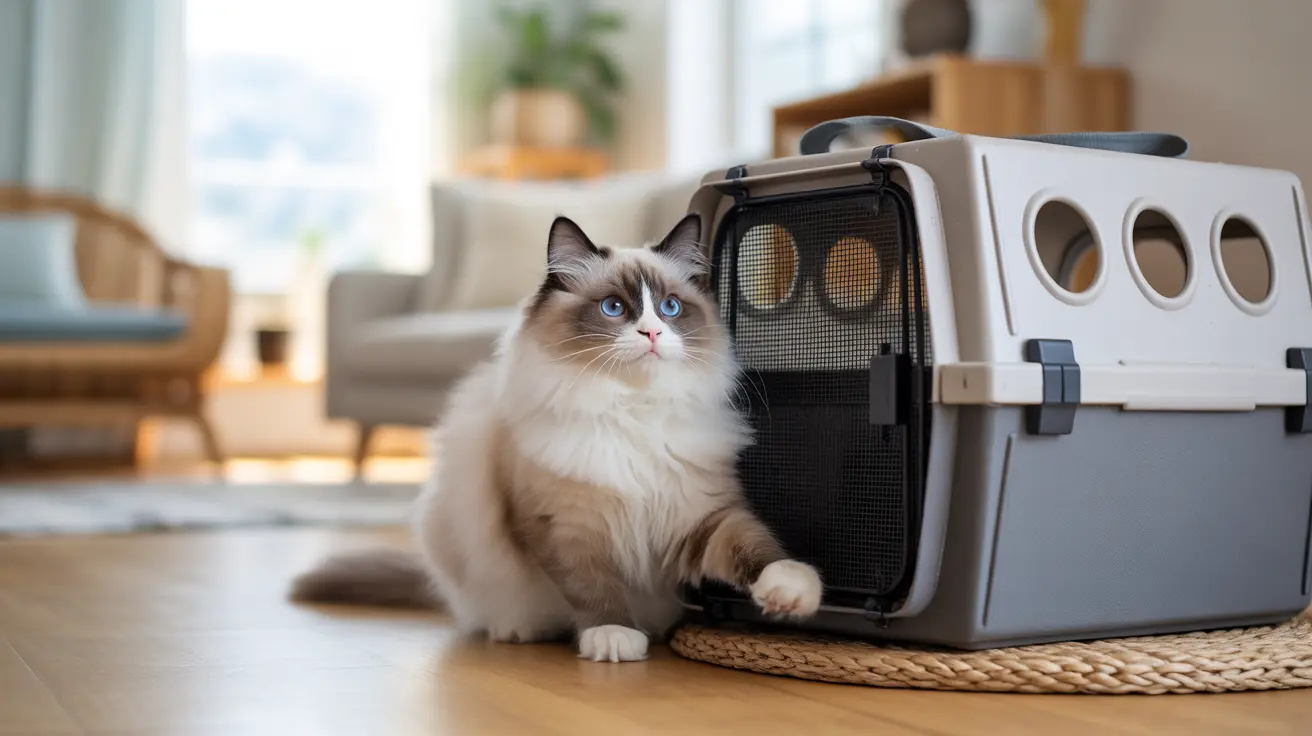Introduction
Creating a DIY cat carrier offers a practical and cost-effective solution for pet owners who need a reliable way to transport their feline friends. Whether you're facing an emergency situation or simply want a customized carrier that perfectly suits your cat's needs, building your own carrier can be both rewarding and efficient. This comprehensive guide will walk you through various DIY cat carrier options, essential safety features, and expert tips to ensure your homemade carrier is both secure and comfortable for your pet.
From quick emergency solutions to more elaborate designs, we'll explore different approaches that use readily available materials while maintaining the highest safety standards for your beloved cat.
Essential Materials and Tools
Before starting your DIY cat carrier project, gather these fundamental materials:
- Sturdy plastic storage container or heavy-duty tote
- Drill with various bit sizes
- Wire mesh or hardware cloth
- Cable ties or strong rope
- Comfortable bedding material
- Basic tools (scissors, utility knife, pliers)
- Safety equipment (work gloves, protective eyewear)
Popular DIY Carrier Designs
The Modified Storage Tote Carrier
This design offers excellent durability and visibility:
- Choose a clear or translucent container
- Drill ventilation holes in strategic locations
- Install mesh windows for additional airflow
- Add a secure latching mechanism
- Line with soft, washable bedding
The Reinforced Backpack Carrier
Perfect for adventure cats and urban exploration:
- Select a sturdy backpack with strong zippers
- Install a clear plastic bubble window
- Add internal support structure
- Create ventilation panels
- Include safety tether points
Safety Features and Requirements
Essential safety elements for any DIY carrier include:
- Adequate ventilation (multiple air holes or mesh panels)
- Secure closure system that prevents escapes
- Sturdy bottom that won't collapse
- Smooth interior without sharp edges
- Weather-resistant materials
- Easy-to-clean surfaces
Tips for Successful Implementation
Consider these important factors when building your carrier:
- Size appropriately (cat should be able to stand and turn around)
- Test all closures thoroughly before use
- Include identification information
- Make cleaning and maintenance simple
- Consider your specific travel needs
Frequently Asked Questions
How can I make a safe and comfortable DIY cat carrier using household items?
Create a safe carrier using a plastic storage container with drilled ventilation holes, secure latches, and comfortable bedding. Ensure all edges are smooth and the size allows your cat to move comfortably.
What are the best materials and tools needed for building a durable DIY cat carrier?
Essential materials include a sturdy plastic container or heavy-duty fabric, wire mesh for ventilation, strong fasteners, and tools like a drill, utility knife, and pliers. Always choose materials that are cat-safe and durable.
How do I ensure proper ventilation and security in a homemade cat carrier?
Create multiple ventilation holes or mesh panels on all sides, ensuring they're small enough to prevent escape but numerous enough for adequate airflow. Use robust latches or zip ties for security.
Are DIY cat carriers suitable for travel by car or airplane, and what safety features should I add?
DIY carriers can be suitable for car travel when properly constructed. For air travel, check airline requirements first, as most require commercial carriers. Add seatbelt loops for car safety and ensure the carrier is escape-proof.
How can I introduce my cat to a DIY carrier to reduce stress and anxiety during trips?
Place the carrier in your home with comfortable bedding and treats inside. Let your cat explore it freely, creating positive associations through rewards and praise. Practice short periods with the door closed before actual travel.
Conclusion
A well-constructed DIY cat carrier can provide a safe, comfortable, and cost-effective solution for transporting your feline companion. By following proper safety guidelines and investing time in quality construction, you can create a carrier that serves your cat's needs while saving money. Remember to regularly inspect and maintain your DIY carrier to ensure it remains secure and comfortable for your pet.






